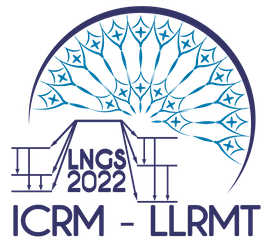Speaker
Description
For beta/gamma coincidence measurements at IMS radionuclide stations, the gross number of counts in a Region of Interest (ROI) is a sum of the net number of counts from a radionuclide, the detector background, interference contributions from other radionuclides, and the activity from previous samples remaining in the detector cell (memory effect). The net numbers of counts and associated uncertainties in ROIs are estimated by the net count calculation (NCC) method generally. The estimation of the detector background using a Monte Carlo method (MCM) that employs a conditional Poisson distribution is investigated in this study. Traditionally, a detector background measurement is carried out at least 6 times longer than routine sample measurements. The numbers of counts of the detector background in ROIs and the associated uncertainties are estimated using a conversion ratio of measurement times between the sample and detector background spectra. In noble gas systems such as SAUNA a gas background measurement takes places prior to each sample measurement routinely. The statistical analysis on the gas background spectra in which the memory effect is not present demonstrates that the gross numbers of counts follow a Poisson distribution, whereby the variance of the number of detector background counts equal to its mean. The estimation of the numbers of counts due to the detector background between the two approaches are consistent, but the associated uncertainty estimated in the traditional approach is underestimated. In the MCM, the likelihood function for the gross number of counts in a ROI assumes that it follows a Poisson distribution with the mean equal to the measured gross number of counts in the spectrum of the single sample measurement. The Poisson distribution for the number of counts due to the detector background is processed in three approaches with the mean equal to: 1) the gross number of counts as observed in the detector background measurement but converted to the sample measurement time; 2) the statistical mean of the numbers of counts in the gas background spectra; 3) the same statistical mean as in the case 2) but under the condition that the sampled number of detector background counts is less than or equal to the sampled gross number of counts, resulting in a non-negative net number of counts. The mean value as well as the standard deviation of the net numbers of counts in each ROI are estimated using the distribution derived through the procedure of the NCC method. The decision thresholds are estimated accordingly by applying the same Poisson distribution for both sample and detector background spectra. The impacts of the three MCM approaches on the net numbers of counts and decision thresholds are compared. In conclusion, the detector background needs to be subtracted using the statistical results of the gas background spectra.

